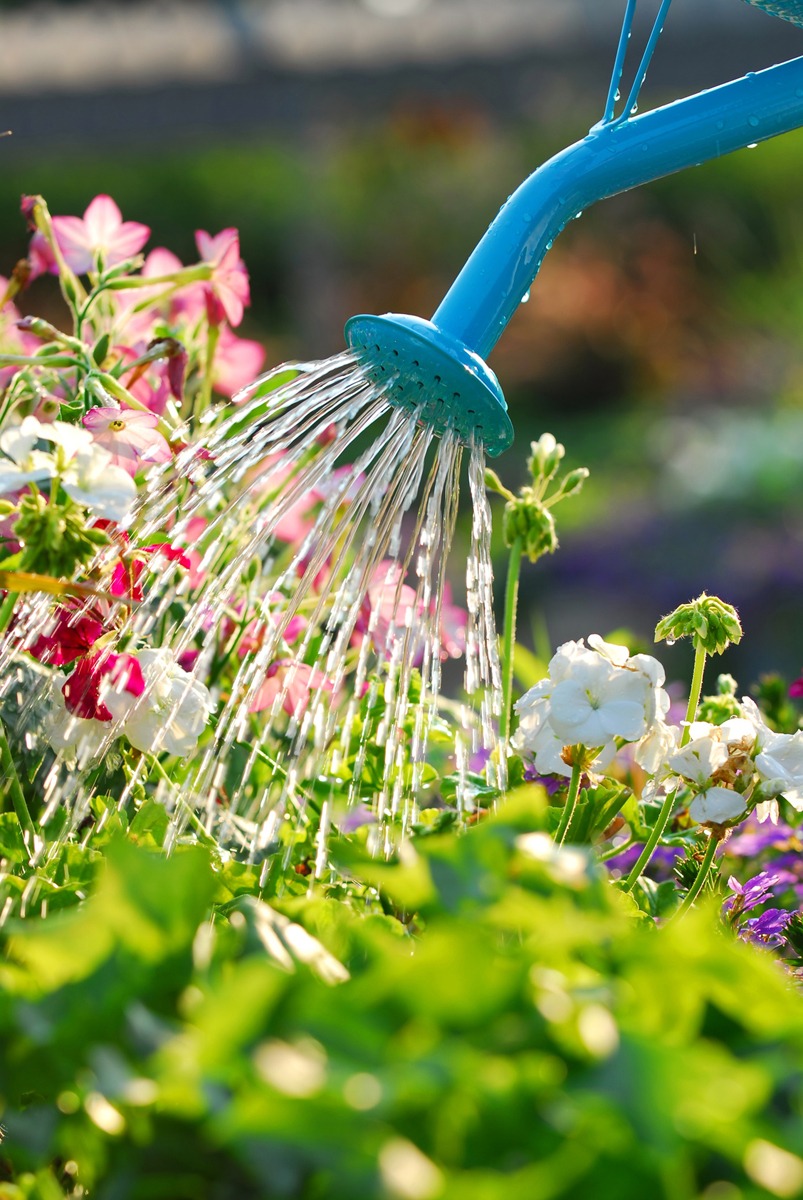 Summer is a great time for growing a garden, filling the family pool, and cooling off under the hose. But these activities can sometimes increase your water costs and deplete a valuable resource. The average American household consumes about 100,000 gallons of water every year, read on to find out how you can conserve!
Summer is a great time for growing a garden, filling the family pool, and cooling off under the hose. But these activities can sometimes increase your water costs and deplete a valuable resource. The average American household consumes about 100,000 gallons of water every year, read on to find out how you can conserve!
Outdoors
1. Get to the Roots
Water plants at the roots (not the leaves). This allows them to drink most efficiently by slowly soaking up water at their most important source.

A picture of what NOT to do!
Get that water in close to the
roots for maximum effectiveness.
2. Keep Water where it Belongs
What good does water meant for your plants do when it’s sprayed all over your house or the street? None! Make sure your sprinklers and hoses are properly positioned so that they only water areas that need it.
3. Less is More
Your lawn only needs 1 inch of water per week to keep it healthy during the summer. You can track how much water you are using by placing a tuna can under the arch of your sprinkler. When the can fills up, you’ve reached 1 inch of water on the lawn.
4. Rise and Shine (and Water)
Watering in the morning when it’s cool and the sun is low in the sky gives water a chance to soak deep into the ground, rather than evaporating quickly in hot, sunny temperatures.
Indoors
5. Enhance Your Flush Power
If everyone upgraded to a water efficient WaterSense toilet, the US could save almost 2 billion gallons of water per day! Additionally, these toilets will save your family over $2000 in water bills during their lifetime.
 6. Don’t Let Water Run Away
6. Don’t Let Water Run Away
A faucet running for 5 minutes uses 8 gallons of water and the equivalent amount of energy as a 60-watt bulb turned on for 14 hours.
*Check out more water saving facts and tips at the following resources:
https://wateruseitwisely.com/100-ways-to-conserve/?view=list
https://water.epa.gov/learn/kids/drinkingwater/water_trivia_facts.cfm
Stats courtesy of: United States Environmental Protection Agency
